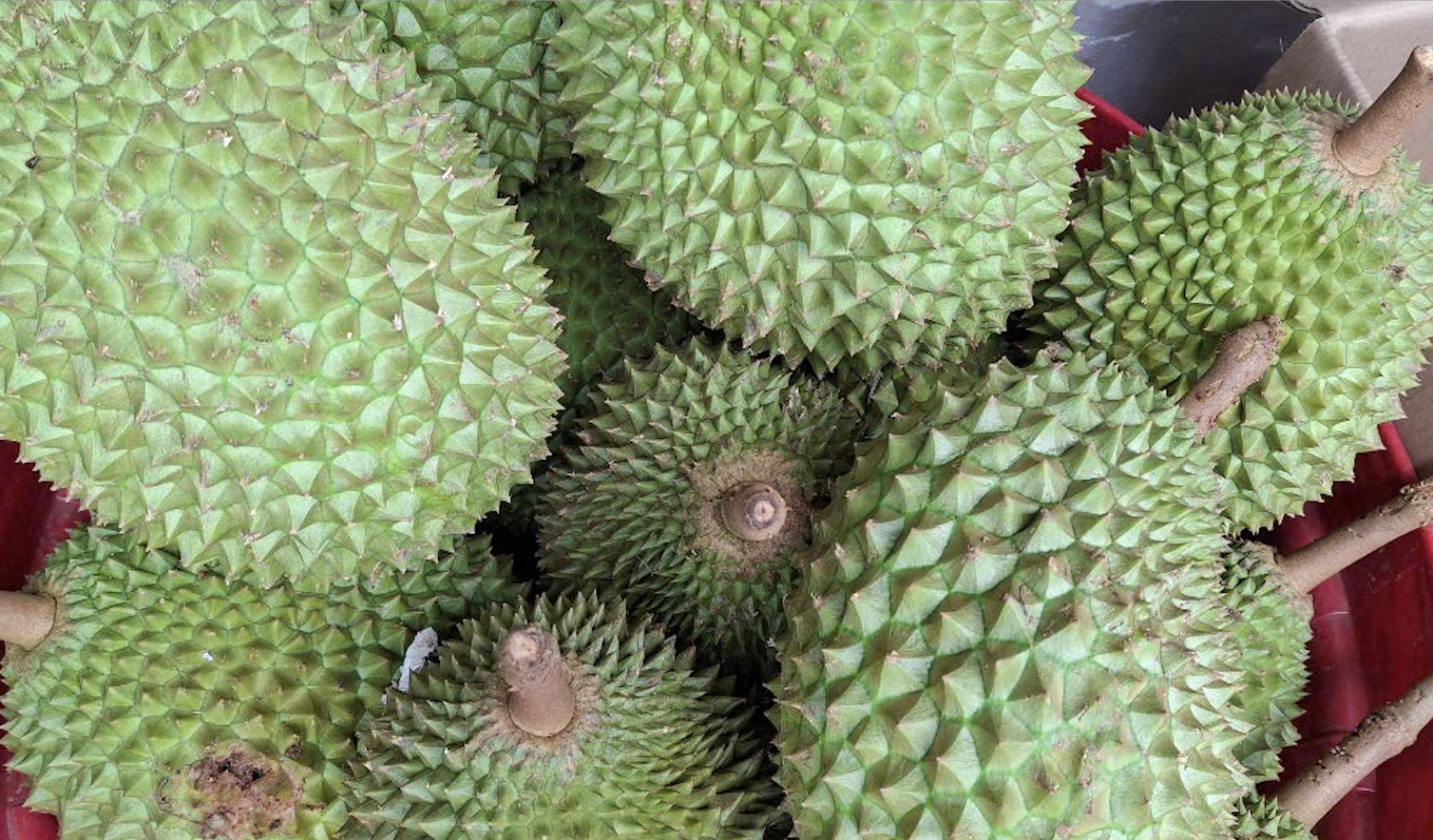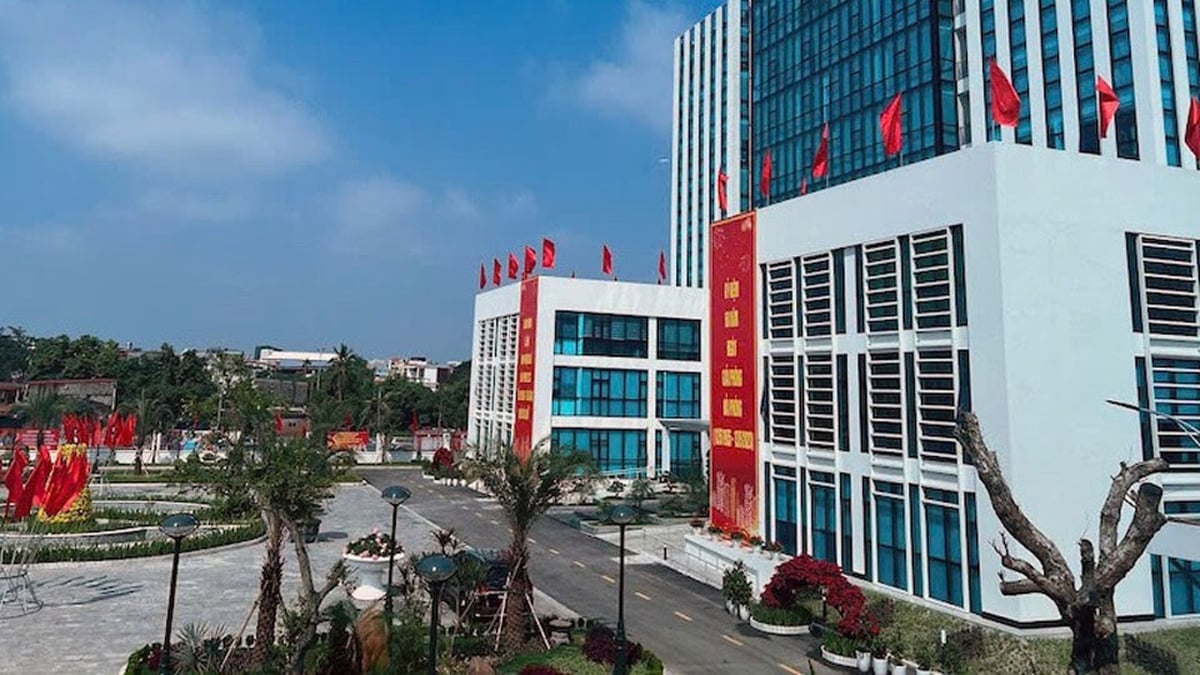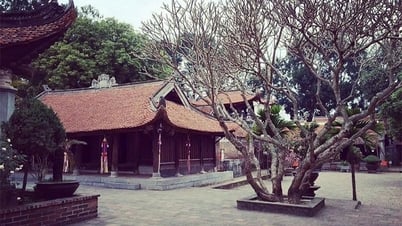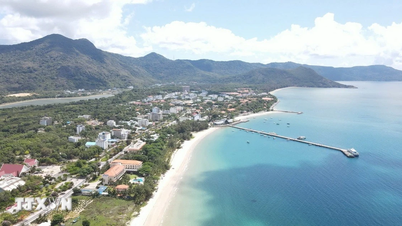“Exporting durian to Chinese market has become more favorable. Now every month, the company has about 35-40 containers of fresh durian exported to China," Mr. Nguyen Dinh Tung - Chairman of the Board of Directors and General Director of Vina T&T Group , told VietNamNet.
Mr. Tung said that in the first months of this year, durian exports to China had to be temporarily suspended because the country's customs checked for the banned substance yellow O and the heavy metal cadmium on 100% of imported shipments.
To avoid economic risks and ensure that the trucks can clear customs at the border gate, Mr. Tung's company was forced to temporarily suspend exports. This is to standardize the process and complete the procedures. Because durian is a very valuable commodity, a 16-18 ton container is worth billions. If the goods are returned, the company will suffer huge losses.
Fortunately, in the past two months, exports have been restored, with the volume of goods equivalent to the same period last year (2024), Mr. Tung said. Last year, Vina T&T Group exported several thousand containers of fresh whole durian to the Chinese market.

Statistics from the Customs Department show that in the first 5 months of this year, our country's durian export turnover reached 387 million USD, down nearly 58% compared to the same period last year.
However, last May, exports of this item skyrocketed by 139% compared to April 2025. Of which, exports to the traditional Chinese market recovered by increasing by nearly 208%.
According to Mr. Dang Phuc Nguyen - General Secretary of the Vietnam Fruit and Vegetable Association, since May, durian export turnover has recovered and grown strongly in the Chinese market (including Hong Kong), Thailand, and Cambodia.
In particular, in June, the export turnover of this fruit is estimated to reach 350-400 million USD. Thanks to that, our country's fruit and vegetable exports earned nearly 810 million USD, an increase of 30.9% compared to the previous month of May and an increase of 20.7% compared to the same period in 2024.
This is also the first month this year that fruit exports recorded positive growth after five consecutive months of negative growth.
“Looking at the June export figures, we can see that durian exports have returned to normal levels as in 2024,” said Mr. Nguyen. He predicted that at this rate, durian exports could bring in $500-550 million per month in the upcoming peak months (September and October).
The General Secretary of the Vietnam Fruit and Vegetable Association said that China is still the main export market, accounting for more than 90% of the country's durian export turnover. Since May, businesses have been better controlling the O-yellow and cadmium content on durian, so export activities have also been smooth.
“Previously, businesses bought in bulk and then tested samples, so the rate of returned goods was high. Now, businesses require gardeners and intermediate purchasing warehouses to also test for banned substances first and only import when they meet quality standards,” said Mr. Nguyen. That means businesses have added a screening step right from the garden before testing samples.
In addition, this is the durian harvest season in the Southeast and Central Highlands regions. According to Mr. Nguyen, these two durian regions have very good control over cadmium in durian. Thanks to that, goods are also more convenient when clearing customs to the Chinese market.
Currently, the price of good quality Ri6 durian ranges from 52,000-65,000 VND/kg, bulk durian is 25,000-30,000 VND/kg. Similarly, good quality Monthong durian is priced from 72,000-90,000 VND/kg, bulk durian is 32,000-50,000 VND/kg.
At current prices, durian growers still make a good profit.
“However, durian prices are unlikely to return to their golden age in 2023-2024,” Mr. Nguyen emphasized. Because currently, China is still the world’s largest durian consumer market. Meanwhile, supply to this market is increasing.
Previously, only Thailand and Vietnam officially exported durian to China. Currently, Malaysia, Indonesia, Cambodia and Laos are also participating in this market. Not to mention, even Thailand and Vietnam are increasing their planting area. Meanwhile, according to the market rules, abundant supply will lead to low prices.
Source: https://baoquangninh.vn/sau-rieng-lai-o-at-xuat-sang-trung-quoc-nho-cach-lam-moi-nguoi-trong-co-lai-3368033.html





























![[Photo] Signing of cooperation between ministries, branches and localities of Vietnam and Senegal](https://vphoto.vietnam.vn/thumb/1200x675/vietnam/resource/IMAGE/2025/7/24/6147c654b0ae4f2793188e982e272651)











































































Comment (0)